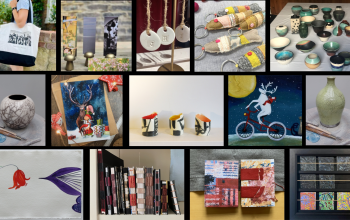The vast, dark chambers of the Turbine Hall are not an obvious home for an artist known for her quiet, intimate portrayals and elegiac subjects.
Tacita Dean’s FILM, however, the giant, 42ft high, 11-minute silent film strip currently beaming and flickering against Tate Modern’s east wall, more than squares up to the challenge of contemporary art’s most hallowed space.
The message, clearly and urgently stated beside the installation, centres on a crisis in analogue film making: the decline of resources and expertise and the need to preserve this medium in all its tactile, idiosyncratic glory.
Shot with a 20th Century-style Cinemascope camera turned on its side, the 12th commission in Tate’s Unilever Series is the result of a painstaking array of pre-digital processes and techniques designed to showcase what was possible in film before everything became possible: how the messy, imperfect business of the photochemical lab captures a reality far apart from the slick, limitless artifice of digital technology.
So what does Dean choose to show us? Rocks, seas, mists and mountains, waterfalls, trees and reflections appear in an apparently random sequence before the shadowy grid backdrop of the east wall, whose windows resemble film strips, and whose history we see in a recurring shot of smoke billowing from the old power station.
Relics of the manmade world: a clock, for instance, water fountain and half-lit lightbulb set up a series of contrasts – interior and exterior, nature and artifice, stillness and movement – that beguile and tease out the paradoxes of film itself. Movement and the passage of time on screen are, after all, only magic tricks; series of still frames, 24 per second, that cannot really capture time at all.
References to the Tate: the industrial, grid-like structures of the east wall, whose rain-soaked windows cut to those of a Gothic cathedral in a rather blatant allusion to the idea of the gallery as cathedral of art, abound and unify this otherwise haphazard, impenetrable sequence.
They also amplify a clever and mischievous play on illusion; are we watching a film, or, as the oversize sprocket holes that flank the vertical column suggest, a strip of celluloid itself? Is the dark space around FILM a cinema, museum, or film set, or reminiscent of the inside of the camera itself?
What is real, Dean tells us, is the production: the scratchings and flickerings that contain a human struggle to create something within a set of limits. The meditative, slightly off-kilter quality of the layerings, reflections and engulfing mists in FILM are the result of cutting, splicing, putting film through camera (sometimes ten times) and simply seeing what happens.
It is a process for which Dean, who ‘needs the stuff of film as a painter needs the stuff of paint’, must go abroad since the termination of 16mm film printing at Soho Labs in earlier this year: the event that shaped this quietly spectacular response to the Tate commission.
Does FILM, then, mark the death of analogue? Does the act of displaying it in a museum of art, to be pondered and thought about rather than enjoyed with popcorn, complete the ossification of the genre? There is undoubtedly solemnity and stasis here: the giant monolith as tombstone; the stillness of the rocks, mountains and buildings.
But to look for some great elegy or monument to the death of the genre is to miss the irreverence, the wit and playful subversions in FILM, which is celebratory – defiant, even, as it takes its place among the Monets and masterpieces of contemporary art.
The luminous opening stained-glass-like panel and dazzling formulations of cyan, magenta, red, green and yellow, though they recall the Modernist grids of Mondrian, are glorious in their own right as they flash and flicker in translucent and opaque form.
Surrealism, that radical and unforgettable moment in film-making, is here too in the giant egg, grasshopper, hens and human toe, which poke fun at the ‘church’ while acknowledging film’s debt to the great artistic movements of history.
If analogue can do high art, Dean explains, it is inseparable from mainstream culture. The recurring image of the mountain is that of the old Paramount Studio logo; the vertical monolith a reference to the column in Kubrick’s Space Odyssey. FILM locates the stuff of which it is made in the fabric of everyday life. The message? If we lose analogue, we lose all of it.
The work has its weaknesses. Some of the images are cliché, even banal; the use of a moving escalator to indicate time passing, for example, and the sickly picture-postcard images of a flower, tomatoes and snail on a leaf are jarring against the subtle games of movement and light that occur elsewhere.
A greater problem lies in the way FILM is, at least to anyone not intimately acquainted with celluloid film, so reliant on textual explanation. While this is provided in abundance – the catalogue contains 81 separate contributions from advocates of analogue, including Steven Spielberg – it is contrary to the pervading spirit of Modernism and its belief in the message of the medium itself.
One does not get a sense of the painstaking labour that went into the work or what is in a graspable, everyday sense being lost as the analogue archive of the past century is transposed to digital. ‘Medium specificity’, Dean writes, while instantly understood in other art forms (the suggestion of parity between a Da Vinci and a digital reprint fills us with horror) is absent in the perception of film.
It is a shame the work does not remedy this, for once you enter the artist’s world FILM is a vibrant, complex response to a particular moment in time. Mere surface and illusion? Yes, but that is the point. Dean has taken on the Turbine and turned it into a vehicle for the medium she loves.




